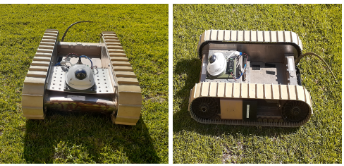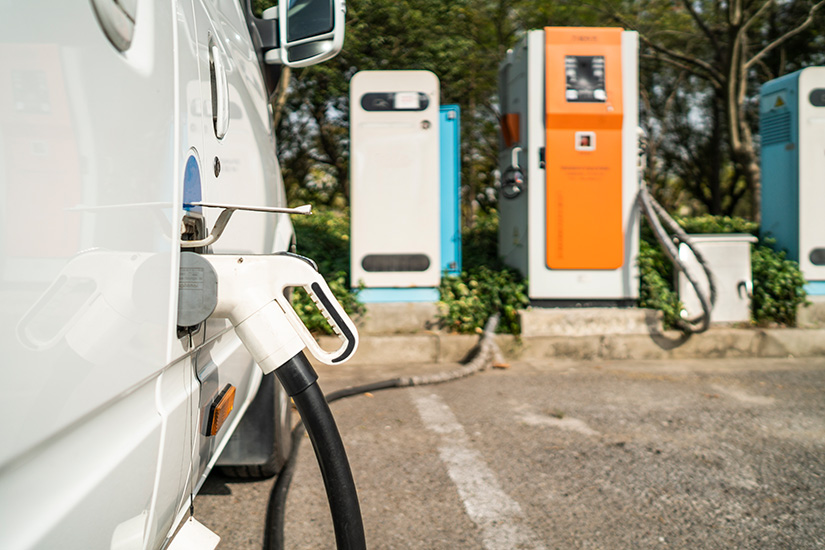2023-09-28 ドイツ連邦共和国・マックスプランク協会(MPG)

- マックス・プランク海洋生物学研究所(MPIMM)、スイス・ジュネーブ大学とオランダ・ラドバウ大学が油田から採取される メタン菌 ( メタンを生成する微生物 )のメテルミコックス ・セング リエンシス(Methermicoccus shengliensis)から分離したギ酸脱水素酵素(FDH)の優れた CO2 変換特性について報告。
- CO2 を捕獲して迅速・効率的にギ酸塩に変換する、新たな CO2 固定化システムとしての役割が期待できる。ギ酸塩はエネルギー貯蔵や薬品製造に使用できる様々な分子の合成に利用できる、安全で安定した化合物。
- CO2 等の温暖化ガスを有用な製品に転換する研究が盛んに実施されているが、CO2 はこれまでに著しい量が蓄積され、また化学的に安定している物質であるため、別の化学物質への転換が難しい。
- FDH は CO2 からギ酸塩への変換反応を効率的に触媒するが、通常この種類に属する類似酵素では、ギ酸塩から CO2 への変換を含む双方向の反応が起こる。本研究では、メテルミコックス・セングリエンシスの FDH によるギ酸塩から CO2 への逆反応が非効率で、ほぼ一方向の反応であることを確認。
CO2 の固定化で生成されるギ酸塩は元の物質に戻らずに蓄積されないため、特に電極と組み合わせることで CO2 捕獲の有力な選択肢となり得る。 - グラファイト電極に同酵素を配置して CO2 変換を試験した結果、高価で有毒な化合物を不要とし、副生物生成や電流損失なく、CO2 を継続してギ酸塩に変換した。
- 電極と組み合わせたこのバイオロジカルなシステムの強みは、CO2 変換への電子移動の効率性。本研究の成果は、高効率な電子移動で CO2 を変換する酵素という新たな分子ツールを科学コミュニティーに提供するもの。
- 電極ベースの CO2 変換にメタン菌から分離した酵素を利用する研究は初めての試み。メタン菌は優秀な天然のガス変換器であるが、大規模なプロセスへの展開には、多大な投資による同様規模の酵素生産システムが必要となる。
- そのため、本研究の成果が理論的には CO2 変換を大幅に向上できるとする一方で、同酵素のメカニズムの解明がまず重要となる。今後はこの反応を促す分子の仕組みを詳しく調査する。
- 本研究には、EU の Horizon 2020 リサーチ・イノベーションプログラム下のマリーキュリー・アクション
(MSCA)グラントが資金を提供した。 - URL: https://www.mpi-bremen.de/en/Capturing-CO2-with-electricity-A-microbial-enzyme-inspires-electrochemistry.html
<NEDO海外技術情報より>
関連情報
Angewandte Chemie International Edition 掲載論文(フルテキスト)
Bioelectrocatalytic CO2 Reduction by Mo-Dependent Formylmethanofuran Dehydrogenase
URL: https://onlinelibrary.wiley.com/doi/10.1002/anie.202311981
Abstract
Massive efforts are invested in developing innovative CO2-sequestration strategies to counter climate change and transform CO2 into higher-value products. CO2-capture by reduction is a chemical challenge, and attention is turned toward biological systems that selectively and efficiently catalyse this reaction under mild conditions and in aqueous solvents. While a few reports have evaluated the effectiveness of isolated bacterial formate dehydrogenases as catalysts for the reversible electrochemical reduction of CO2, it is imperative to explore other enzymes among the natural reservoir of potential models that might exhibit higher turnover rates or preferential directionality for the reductive reaction. Here, we present electroenzymatic catalysis of formylmethanofuran dehydrogenase, a CO2-reducing-and-fixing biomachinery isolated from a thermophilic methanogen, which was deposited on a graphite rod electrode to enable direct electron transfer for electroenzymatic CO2 reduction. The gas is reduced with a high Faradaic efficiency (109±1 %), where a low affinity for formate prevents its electrochemical reoxidation and favours formate accumulation. These properties make the enzyme an excellent tool for electroenzymatic CO2-fixation and inspiration for protein engineering that would be beneficial for biotechnological purposes to convert the greenhouse gas into stable formate that can subsequently be safely stored, transported, and used for power generation without energy loss.



